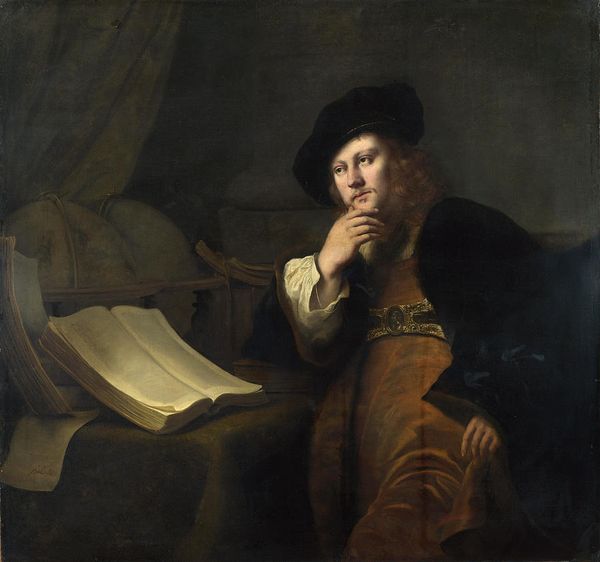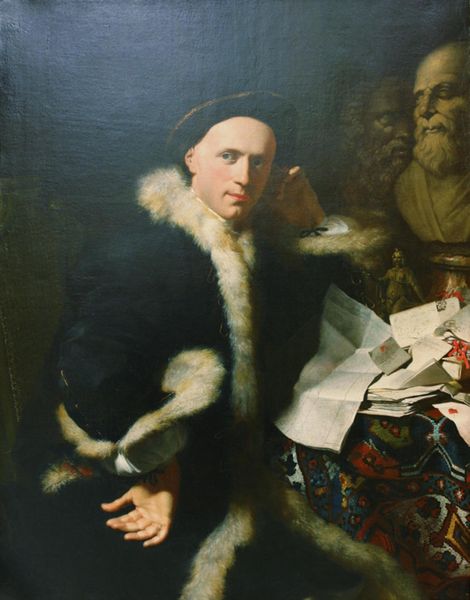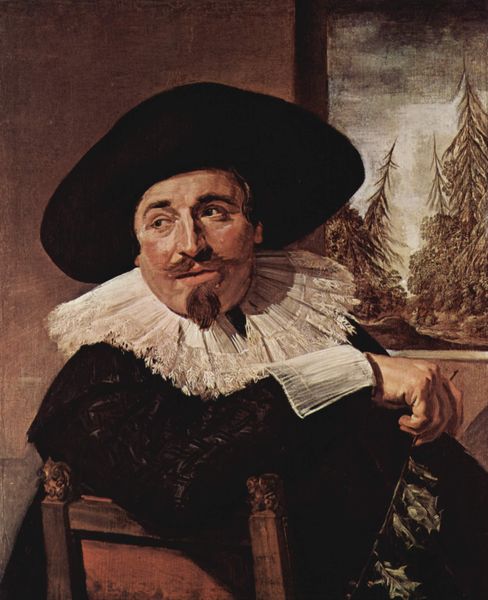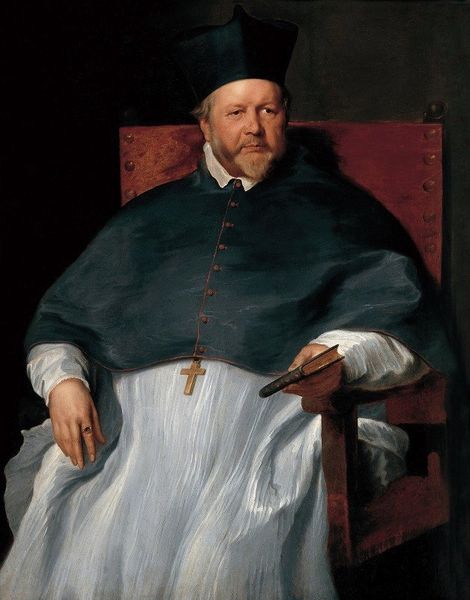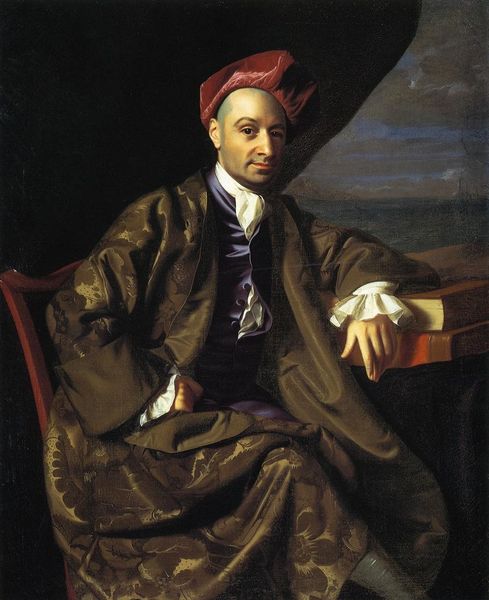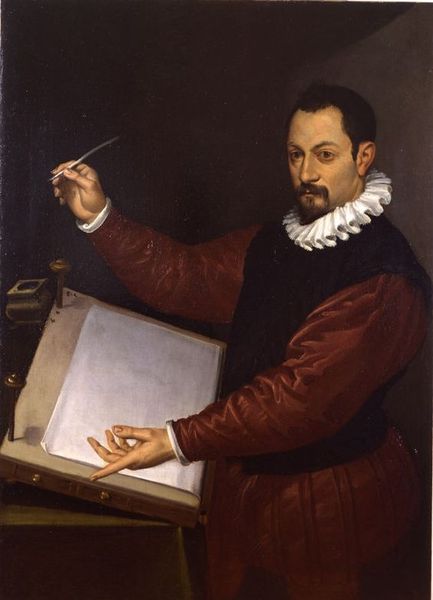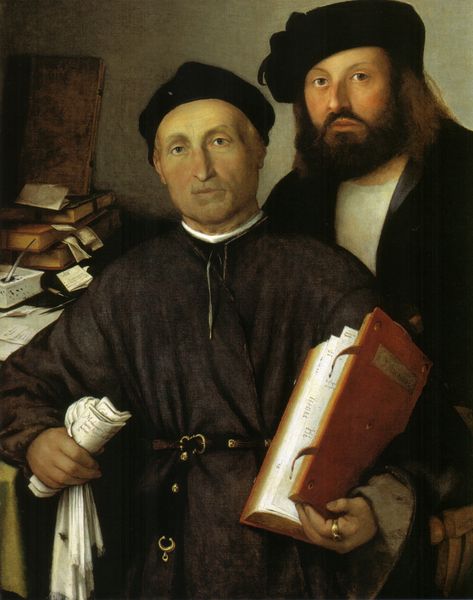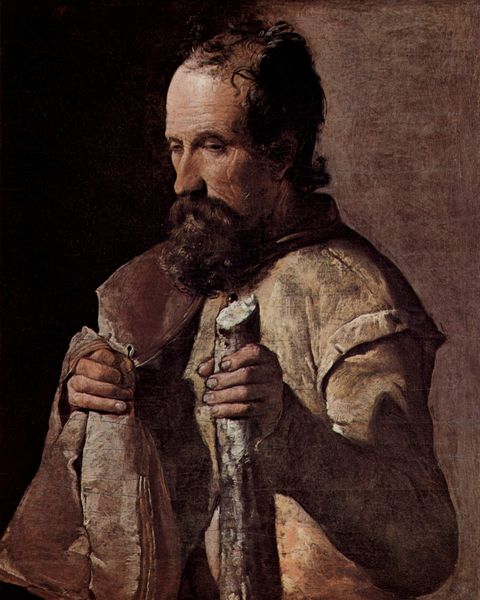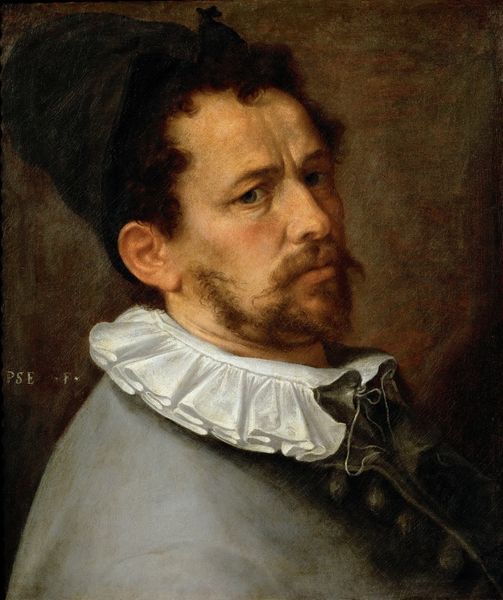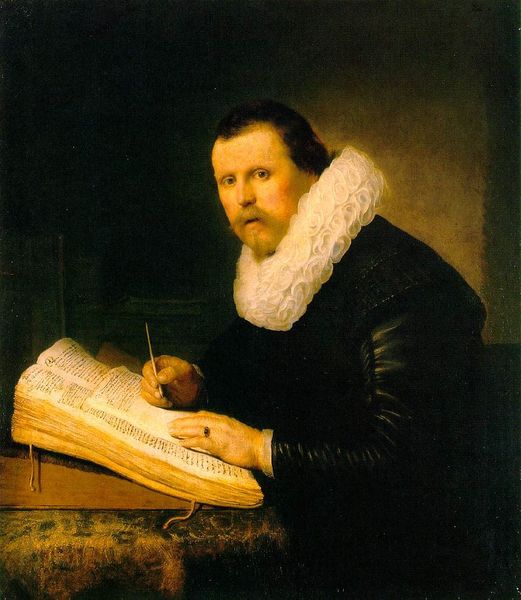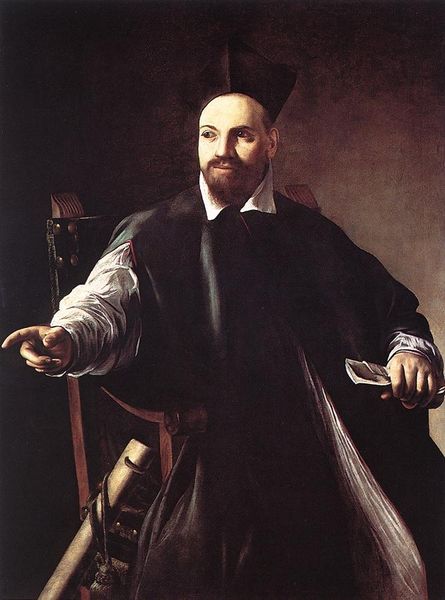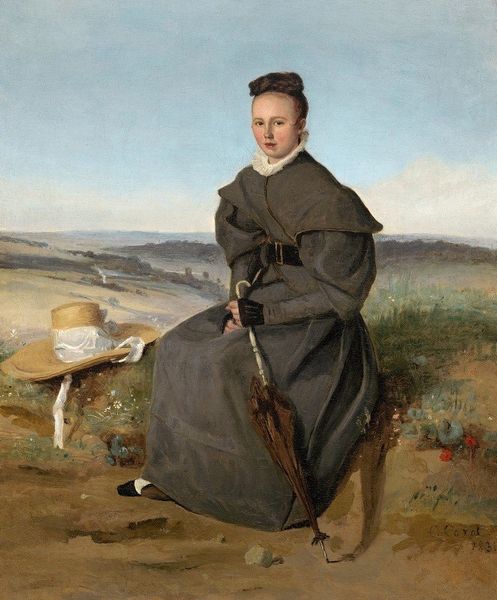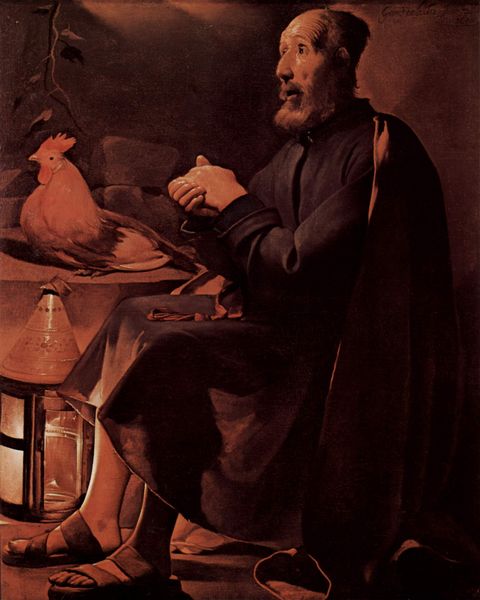
painting, oil-paint
#
portrait
#
baroque
#
painting
#
oil-paint
#
oil painting
#
history-painting
#
academic-art
Copyright: Public domain
Curator: Velázquez's "A Dwarf Holding a Tome in His Lap," painted around 1645, captures a powerful image of intellect and marginalization. The work hangs in the Museo del Prado in Madrid. Editor: My first impression is one of profound isolation. The figure seems swallowed by shadows, anchored only by the open book. There is such vulnerability present. Curator: Absolutely. The symbolic weight of the book is heavy. We have to remember that the historical context for dwarfs in royal courts during the Baroque era meant they were frequently exploited as objects of entertainment or even scholarly prestige, it suggests this man's intellect was at the service of others. How does this link to broader contemporary readings about societal marginalization? Editor: Precisely, the oversized book practically dwarfs the dwarf. It can be interpreted as the weight of knowledge—wisdom often denied to marginalized people throughout history. Curator: His attire contributes as well, doesn't it? Editor: Undeniably, his dark clothing is a sartorial symbol which simultaneously obscures and empowers the individual within society's strict hierarchical structures. This makes us question just what role this figure might have played during that period within Spanish Society. Curator: Indeed. We need to acknowledge this man’s potential. He's rendered with a complexity that belies easy categorization as "other." It feels very Baroque in this manner, and it speaks profoundly to questions surrounding agency. Editor: This representation moves beyond a simple visual portrayal to engage with themes central not only during this era but of ongoing importance too: Knowledge itself then is more than informational matter; rather it may carry symbolic significance linking cultural memory through iconic emblems and triggering empathy based on human perception—especially in how marginalized populations internalize cultural expectations or attempt self definition through creativity expression which we are witness here through reading that huge text filled booklet. Curator: Reflecting, the power here lies not in what society prescribed for this person, but rather in how it has the potential, even then, to take back authority despite what the power dynamics represent within court settings by embracing learning or even potentially knowledge itself, using literacy, for that means agency here above others factors too indeed making him distinct through visual means despite circumstance. Editor: And his intense gaze feels like a direct challenge and demand for consideration on viewers. Thank you.
Comments
No comments
Be the first to comment and join the conversation on the ultimate creative platform.
